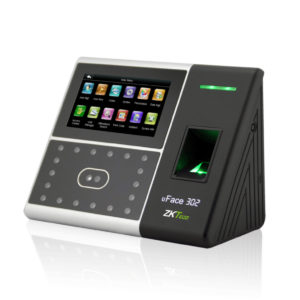
01 Aug RFID Time Clocks – The Pros and Cons
What are RFID Time Clocks?
Radio Frequency Identification (RFID) or Proximity Card Time Clocks are devices that provide businesses with an efficient way to track employee attendance. By leveraging RFID technology, these time clocks enable swift and reliable timekeeping that helps streamline workforce management processes. In this article, we will explore what RFID/Proximity Card Time Clocks are, how they work, and their various benefits and drawbacks.
Understanding RFID/Proximity Card Time Clocks
What are RFID/Proximity Card Time Clocks?
RFID/Proximity Card Time Clocks are timekeeping devices that use RFID technology to log employee attendance. These systems typically involve employees carrying RFID cards, which they present to an RFID reader when they arrive and leave work.
How do RFID/Proximity Card Time Clocks Work?
The RFID proximity cards contain an embedded RFID chip that communicates wirelessly with the RFID reader on the time clock. When an employee places their card near the reader, the RFID tag in the card sends out a unique identifier to the reader. The time clock then records the time and associates it with the employee’s ID, thus logging the employee’s arrival or departure time.
Clocking In: When arriving at work, the employee will take their RFID card and hold it near the proximity sensor on the RFID time clock. The sensor scans the information embedded in the card’s RFID chip, which includes a unique identifier for the employee. The time clock records the time of the scan as the employee’s clock-in time and associates it with the employee’s ID in the system.
Clocking Out: The process is similar when leaving work. The employee presents their RFID card to the time clock’s sensor. The system records the scan’s time as the employee’s clock-out time.
It’s important to note that the distance required between the card and the sensor for a successful scan depends on the system in use. In some cases, the card needs to be very close to the sensor, while in others, it may be read from several feet away.
The clock-in and clock-out times recorded by the system are usually synced with a central database in real-time. This allows managers or the HR department to monitor employee attendance, late arrivals, early departures, and overtime work effectively.
Advantages of RFID Time Clocks
Efficiency and Accuracy
RFID/Proximity Card Time Clocks offer a highly efficient and accurate way of recording employee attendance. Unlike manual timekeeping, there is no room for payroll error, and the process is swift, reducing time wasted on manual logging.
Cost Reduction
By automating attendance tracking, RFID/Proximity Card Time Clocks reduce the need for manual labor, translating to cost savings.
Real-time Tracking and Integration
These systems provide real-time updates and can integrate with other HR systems. This allows for timely and informed decision-making regarding employee scheduling, payroll, and overall workforce management.
Drawbacks of RFID Time Clocks
Cost of Implementation
RFID systems can be expensive to implement initially, with costs associated with purchasing hardware, setting up the system, and training employees.
Risk of Loss or Damage
RFID and proximity cards can be lost, stolen, or damaged, which can interrupt an employee’s ability to clock in or out.
Privacy Concerns
The use of RFID technology may raise privacy concerns as it involves tracking employee movements. Companies must, therefore, ensure they comply with local laws and respect employee privacy when implementing such systems.
Buddy Punching
Buddy punching is a common issue in workplaces, where an employee clocks in or out for another, often to cover lateness or absence. With RFID cards, this practice can become a problem as cards can be easily passed between employees. It essentially undermines the primary purpose of RFID time clocks, which is to accurately track each employee’s working hours. However, advanced systems can mitigate this risk by pairing RFID cards with other forms of identification, such as PIN codes or biometric data. Hence, while RFID cards enhance efficiency in timekeeping, their susceptibility to buddy punching requires careful management.
Conclusion
RFID/Proximity Card Time Clocks provide a valuable solution for businesses seeking to improve efficiency and accuracy in their timekeeping processes. Despite some drawbacks, the benefits often outweigh the costs, particularly for larger organizations. However, companies must handle implementation carefully, taking into account both financial and privacy considerations.




